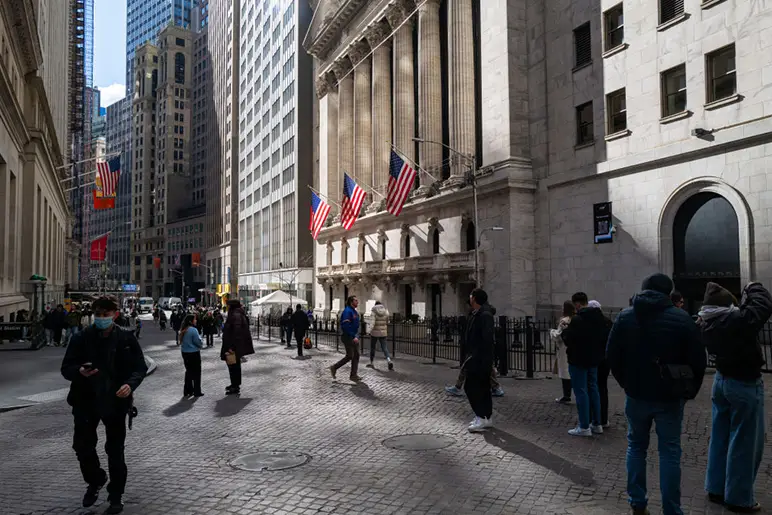Inflation Persistence Analysis: Market Rally Amid Rate Change Concerns

Integrated Analysis
This analysis is based on the Yahoo Finance video [1] published on November 10, 2025, featuring Peter Borish, Chairman and CEO of Computer Trading Corporation and former founding partner at Tudor Investment Corporation, who warned that inflation rates are unlikely to decline significantly in the near future despite current market rallies.
Market Performance Divergence
The equity markets are displaying notable divergence that supports Borish’s concerns about rate sensitivity. Over the past 30 days, major indices have posted gains with the Dow Jones Industrial Average leading at +4.00%, followed by NASDAQ Composite (+2.00%) and S&P 500 (+1.64%) [0]. However, the Russell 2000 lagged significantly at only +0.33%, suggesting small-cap stocks are more vulnerable to interest rate concerns [0]. This performance gap indicates that markets are not uniformly optimistic but are selectively pricing in rate-related risks.
Sector performance further validates this thesis, with defensive sectors like Healthcare (+1.12%) and Financial Services (+0.79%) leading, while Technology (-0.87%) underperformed [0]. This rotation pattern typically emerges when investors anticipate higher rates, as growth-oriented tech stocks become less attractive relative to value sectors that benefit from rate increases.
Commodity Market Inflation Signals
Precious metals are providing strong confirmation of inflation concerns. Gold futures are currently trading at $4,191.10, up 1.82% on the day and approaching its 52-week high of $4,358.00 [0]. Silver futures show even more pronounced movement, trading at $52.97, up 4.39% on the day and near its 52-week peak of $53.34 [0]. The strong performance of both metals, particularly silver’s 4.39% daily gain, directly supports Borish’s thesis about inflation expectations being priced into markets [1].
Structural Inflation Pressures
The current inflation environment remains challenging despite some moderation. September 2025 inflation stood at 3.0%, above the Fed’s 2% target [2]. The Federal Reserve’s preferred inflation measure (PCE) has remained above 2% for over four years, the longest streak since 1995 [2]. Economists polled by Reuters expect PCE to average above 2% through 2027, indicating persistent inflation concerns [2].
The fiscal situation adds significant structural pressure. FY 2025 deficit reached $1.8 trillion, representing 5.8% of GDP [3]. Federal debt held by the public increased by $2.0 trillion in FY 2025, reaching $30.3 trillion (98% of GDP) [3]. Interest on the national debt has become one of the largest federal budget items, exceeding defense spending and ranking behind only Medicare and Social Security [3]. This fiscal backdrop directly supports Borish’s concern about structural inflationary pressures from government deficits [1].
Key Insights
Rate Velocity Over Rate Levels
Borish’s key insight that “the speed of rate moves” matters more than absolute levels is particularly relevant given current market dynamics [1]. The market’s focus on rate changes rather than levels suggests rapid policy adjustments could cause outsized market reactions. This is especially true given the recent government shutdown has delayed crucial employment and inflation data releases, creating uncertainty about economic momentum [2].
Market Fragmentation as Warning Signal
The significant performance divergence between large-cap and small-cap stocks, along with sector rotation, represents a fragmentation pattern that historically precedes market adjustments. While large-cap indices show gains, the underperformance of small-caps and growth sectors indicates underlying concerns about rate sensitivity and economic outlook.
Deficit-Driven Inflation Dynamics
The relationship between federal deficits and inflation has become more pronounced. With debt-to-GDP at 98% and interest costs consuming an increasing share of the federal budget, the fiscal situation creates structural inflationary pressure that monetary policy alone may struggle to address [3]. This suggests that even with Fed rate cuts, inflation may remain elevated due to fiscal constraints.
Risks & Opportunities
High-Risk Indicators
The analysis reveals several risk factors that warrant attention:
-
Fiscal Sustainability: With the debt-to-GDP ratio at 98% and interest costs consuming an increasing share of the federal budget, the fiscal situation creates structural inflationary pressure [3].
-
Policy Uncertainty: The end of the government shutdown and delayed data releases create near-term uncertainty that could trigger market volatility [2].
-
Rate Sensitivity: The market’s focus on the “speed of rate moves” rather than absolute levels suggests rapid policy changes could cause outsized market reactions [1].
Opportunity Windows
-
Defensive Sector Strength: Healthcare and Financial Services sectors are showing relative strength, potentially offering protection against rate-related volatility [0].
-
Precious Metals Inflation Hedge: The strong performance of gold and silver suggests continued demand for inflation protection [0].
-
Large-Cap Resilience: Large-cap stocks have shown better performance, potentially indicating quality bias in uncertain rate environments [0].
Key Monitoring Factors
Decision-makers should track:
- PCE Inflation Data: The November 26th release will provide crucial insight into inflation trends [2].
- Fed Communications: Any shifts in the Fed’s forward guidance regarding the pace of rate adjustments [2].
- Fiscal Policy Developments: Changes in government spending or tax policy that could affect the deficit trajectory [3].
- Commodity Price Trends: Continued strength in precious metals could signal persistent inflation expectations [0].
Key Information Summary
The analysis reveals a complex market environment where surface-level rallies mask underlying concerns about inflation persistence and rate sensitivity. Peter Borish’s warning that inflation rates are unlikely to decline soon is supported by multiple market indicators, including precious metals strength, sector rotation patterns, and fiscal constraints [1]. The market’s focus on the velocity of rate changes rather than absolute levels suggests heightened sensitivity to policy adjustments.
Current data shows mixed performance across market segments, with large-cap outperformance but small-cap underperformance indicating selective risk assessment [0]. Structural inflation pressures from federal deficits, combined with delayed economic data releases, create an environment of uncertainty where rapid policy changes could trigger outsized market reactions.
The divergence between optimistic market sentiment and underlying inflationary pressures suggests that current rallies may be fragile, particularly if rate adjustments occur more rapidly than anticipated. This environment requires careful monitoring of both monetary and fiscal policy developments, as well as sector-specific performance patterns that may signal shifting risk appetites.
数据基于历史,不代表未来趋势;仅供投资者参考,不构成投资建议
